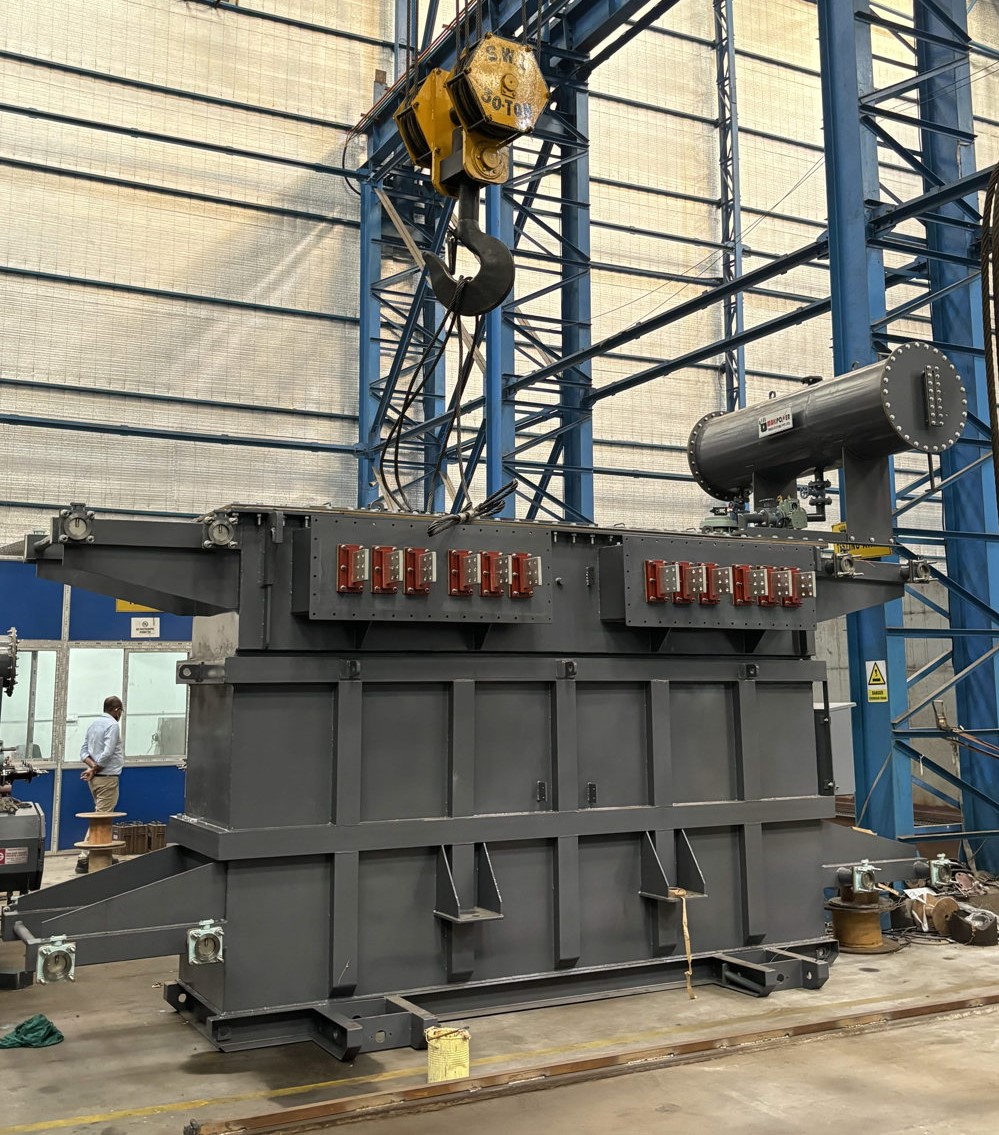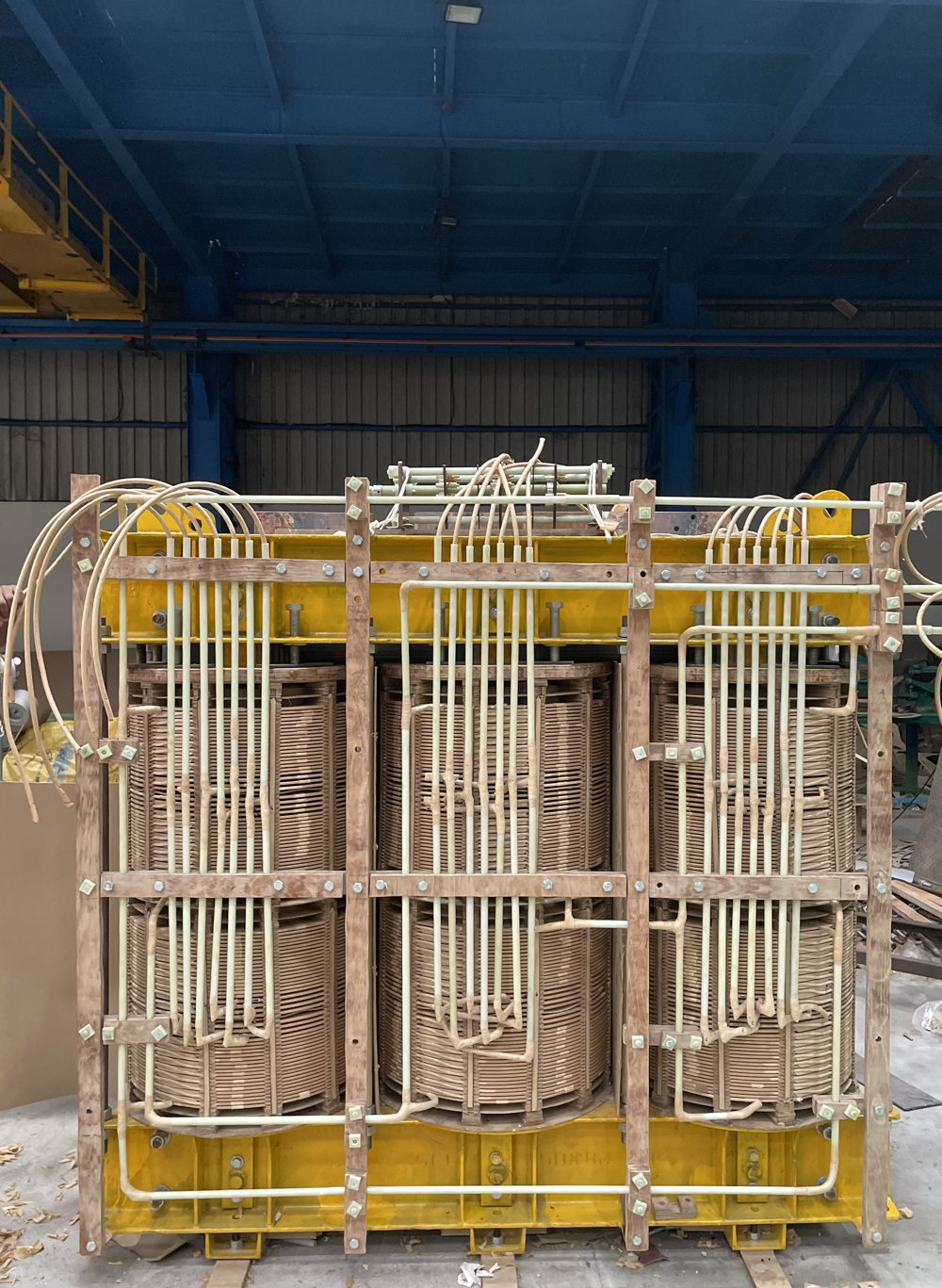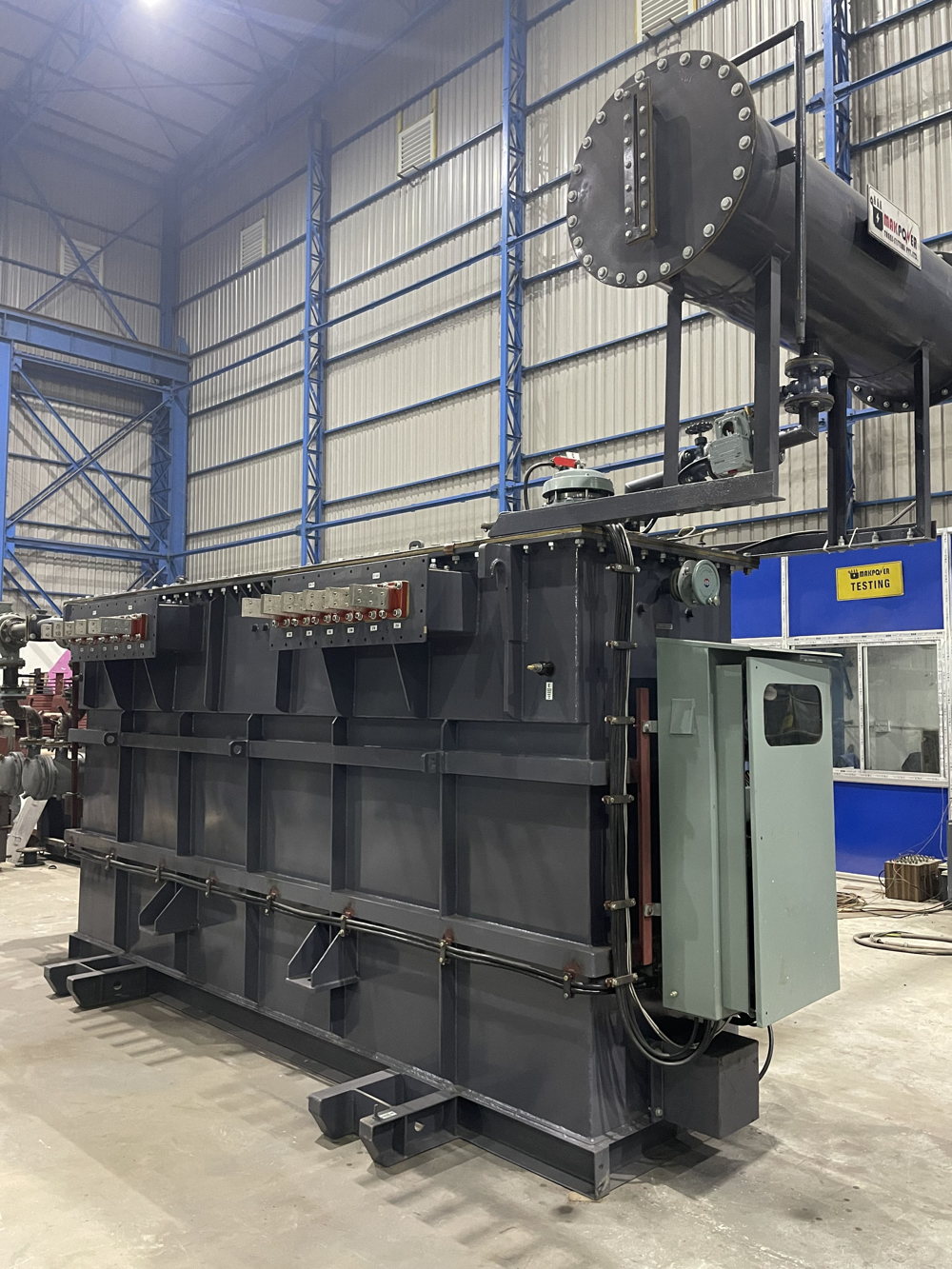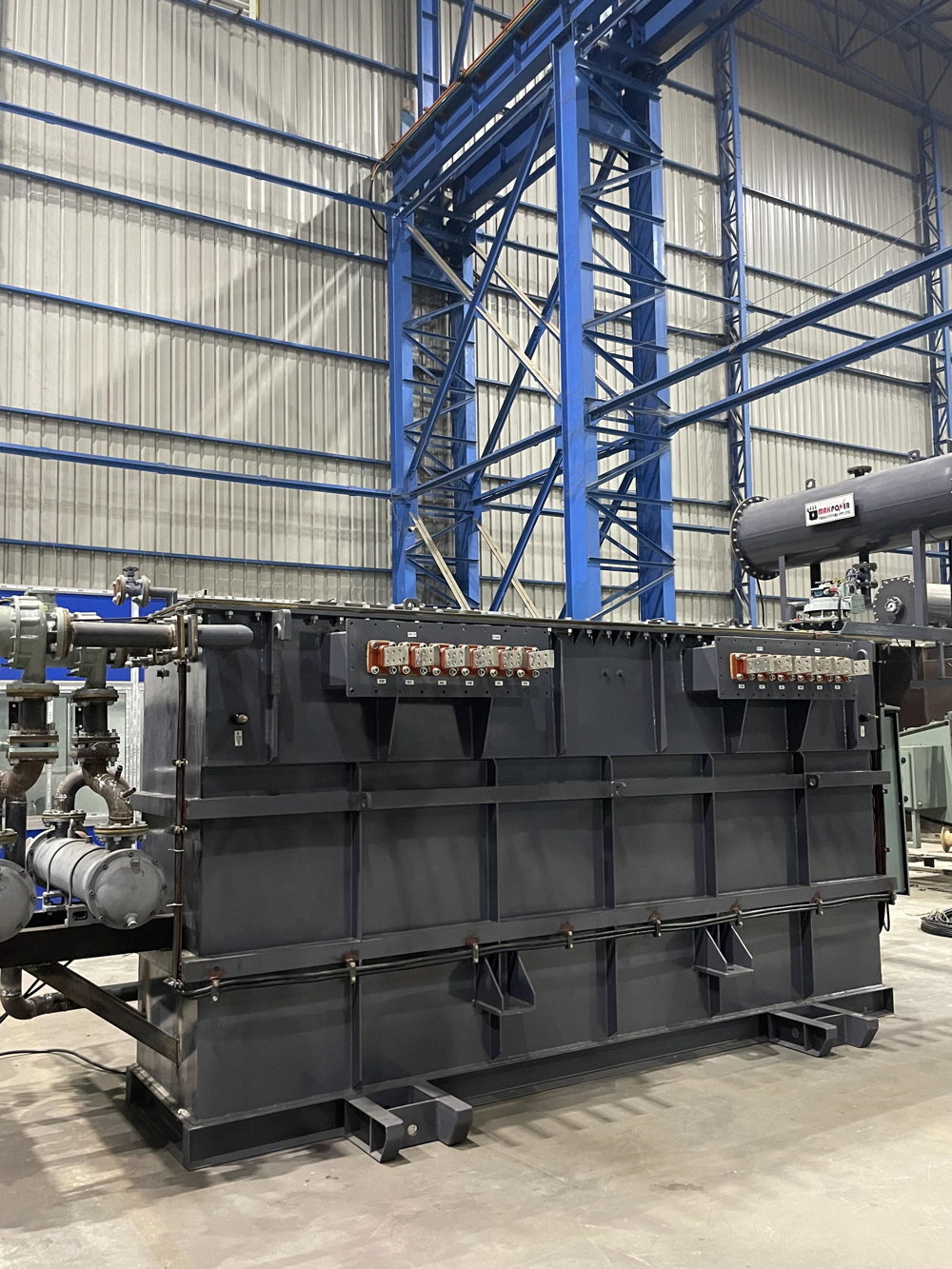
Range: Upto 22MVA, 33KV
The induction melting transformers are uniquely designed for industrial applications where precise and efficient induction heating is required. It can efficiently heat the induction furnaces using a sophisticated inverter circuit to generate a voltage of medium frequency (500Hz or 1000Hz). The heavy copper tubing construction of the coil, tuned precisely to the inverter circuit, helps the induction coil to generate a magnetic field, inducing eddy currents in the charge and effectively heating it.
Key Features
Construction of Coil: The coils are constructed with Robust heavy copper tubes to ensure durability and efficiency.
Medium frequency: The transformers are tuned to operate at medium frequencies that generate considerable heat.
Input voltages: Our transformers are compatible with a range of input voltages derived from standard three-phase AC distribution voltages.
Flexible configuration: The transformers are available in four configurations with different vectors - 6 Pulse, 12 Pulse, 18 Pulse, and 24 Pulse.
• Derived from standard three-phase AC distribution voltages (e.g., 433 V, 3.3 kV, 6.6 kV, 11 kV, 22 kV, 33 kV)
• Depending on the desired DC output voltage, The transformers are available in the 400 to 1250-volt range
• Available in four configurations with different vectors - 6 Pulse, 12 Pulse, 18 Pulse, and 24 Pulse.
• These medium-frequency optimized transformers can ensure rapid and effective generation of heat.
• The transformers are designed with heavy copper tubing and robust designs that provide efficiency and longevity.
• They are adaptable to a range of input voltages, making them flexible for various industrial applications.
• Adjustable to different vector groups, allowing customization based on specific application needs.
The Induction Melting Furnace Transformer by Makpower is essential in industries where precise and efficient induction heating is crucial. It excels in applications like heat treatment and metal melting, providing controlled, high-temperature conditions for optimal process outcomes.
Certifications: IS/2026, IS/5553, IS/12977
Quality Assurance: We assure quality for all our products, from design to production to labor and quality people. Our transformers are quality-focused and dynamic toward ensuring excellent performance.
Installation Services: We have an Electrical Contractor License for Installation support.
Maintenance and Repair Services: Repair services are available only for our Own Manufactured Transformers.












The primary function of this transformer is to supply the voltage required for an induction furnace's inverter circuit, which allows for effective and regulated medium-frequency induction heating.
Your requirements can only determine which configuration to use. Considerations should be made for the kind of metal, heating effectiveness, and other particular needs. Our professionals can help you choose the best configuration.
Standard three-phase AC distribution voltages, such as 433 V, 3.3 kV, 6.6 kV, 11 kV, 22 kV, and 33 kV, are the source of the primary voltage; the secondary voltage can be adjusted between 400 and 1250 V to achieve the desired DC output voltage.
The overall efficiency of the induction heating process is increased by the transformer's design and integration with the inverter circuit, which optimizes energy transfer.